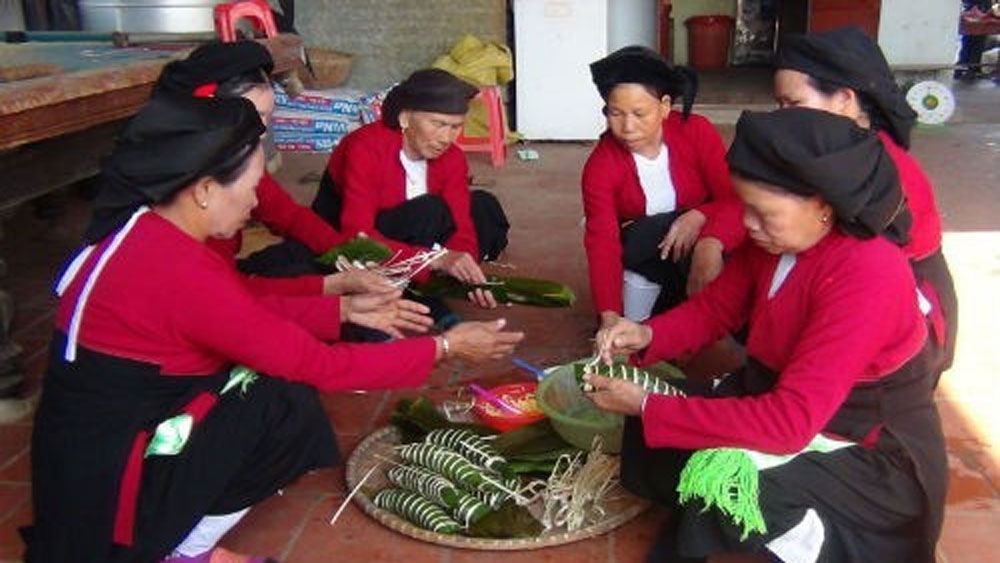Tet of the San Diu ethnic minority group
The group considers Tet an occasion for family members to gather after a year of hard work. To welcome the new year, San Diu people decorate their homes with red papers stuck on ancestor altars, entrance doors, gates and perennial trees in their gardens in the belief that red papers will bring in fortune and happiness for not only their own families but the community and other living creatures as well.
 |
|
San Diu people in Bac Giang prepare for Tet. |
While eating simple food like vegetable, bamboo shoot, taro and bean everyday, the San Diu prepares numerous dishes for Tet, including fried pork, fried duck, banh tay (long sticky rice cake with green bean and pork filling), banh gio (cake made from stick rice soaked in forest leaf liquid and served with honey) and sour meat.
About one week before Tet, San Diu families buy food or kill pigs to make Tet dishes which can be reserved for as long as one month as the group has good food preservation methods.
At the Tet fair which is held right before Tet, San Diu women sell their self-made products such as peanuts, beans, chickens and ducks to buy domestic utensils and new clothes for children and elderly people.
During Tet, the San Diu wear beautiful costumes. A man wears a black five-panel shirt long down to the knees, which is buttoned on the right, and white or brown trousers with wide and straight legs, long crotch and broad upper hems. He also wears a shorter white shirt inside.
A woman’s costume includes a headdress, a brown bodice, a short brown blouse, which is buttoned to the collar and has two small pockets on the flaps, a four-panel knee-length dress with the upper part in brown and the lower part in black, which can be either buttoned or not, and a black long skirt. The costume is completed with leggings and slippers or wood clogs.
On the New Year’s Eve, the San Diu make an offering meal for their ancestors, praying for their blessing for a lucky and prosperous new year. The offerings include a chicken or a piece of boiled pork, a bottle of wine, fruits and Tet cakes.
On the first day of the lunar New Year, San Diu families eat porridge served with minced meat and spring onion. After the New Year meal, children wish their parents good health and elderly people give little kids lucky money. After that, men visit relatives and villagers to give New Year wishes. Women can go out but are not supposed to visit any families so they often stay at home to receive guests.
On the first and second days of Tet, San Diu people are not supposed to dump rubbish, which is only swept into a corner of their houses. Rubbish disposal during Tet is believed to deny the family of good fortune throughout the year. Only on the third day, they put rubbish together with a piece of banh tay and a burning incense in a basket and dump it under a big tree in the village in the belief that hungry evil spirits are driven out of their homes.
On the second day of the new year, every San Diu family prepares a hearty meal for offering to ancestors. The meal includes different dishes made from chicken and pork and five bowls of banh troi (scalded round sticky rice cake with brown sugar filling). After the offering ritual, the family shares the meal with relatives and guests.
During Tet, San Diu young people sing soong co, a kind of singing exchange between boy and girl groups. In this typical folk art of the group, young men and women sing songs about their villages, ancestors, friendship and love.
Source: VNA
 Bắc giang
Bắc giang














Reader's comments (0)